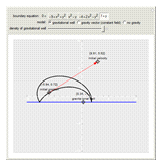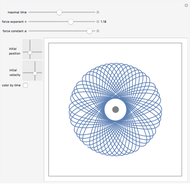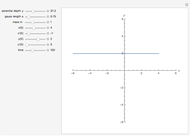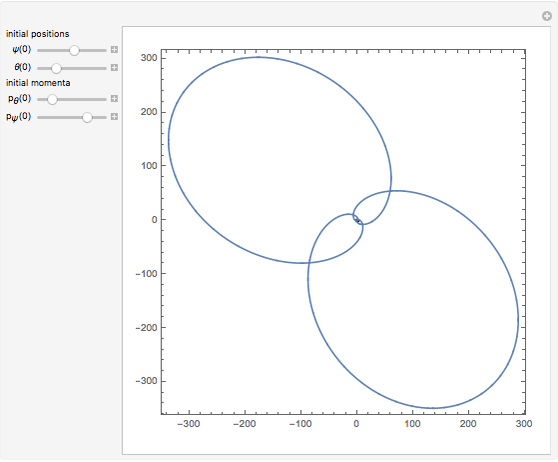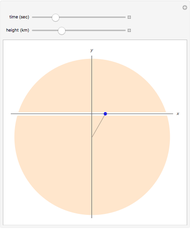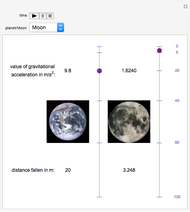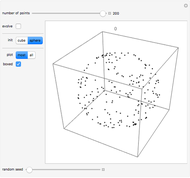Motion of a Particle Colliding with Massive Objects

Requires a Wolfram Notebook System
Interact on desktop, mobile and cloud with the free Wolfram Player or other Wolfram Language products.
This Demonstration shows the path that a particle would take given an initial position, velocity, and a direction of a constant gravitational field, and how the path changes when the particle collides elastically with an rigid solid with boundary defined by a Cartesian equation. When the gravitational-well model is selected, the solid object serves as the source of gravitational attraction, with a  law of force.
law of force.
Contributed by: Itay Plavin (November 2014)
Open content licensed under CC BY-NC-SA
Snapshots
Details
Snapshot 1: the particle's path inside a parabola subject to a constant downward vector gradient
Snapshot 2: in the absence of any gravity, the particle follows the path of a photon with total internal reflection, shown here for a hyperbolic barrier; this is analogous to Thales's theorem for a circle
Snapshot 3: particle in the gravitational field of a rectangular block
Reference
[1] A. Salga, "Understanding Vector Reflection Visually." (Sep 23, 2013) asalga.wordpress.com/2012/09/23/understanding-vector-reflection-visually.
Permanent Citation
"Motion of a Particle Colliding with Massive Objects"
http://demonstrations.wolfram.com/MotionOfAParticleCollidingWithMassiveObjects/
Wolfram Demonstrations Project
Published: November 24 2014



